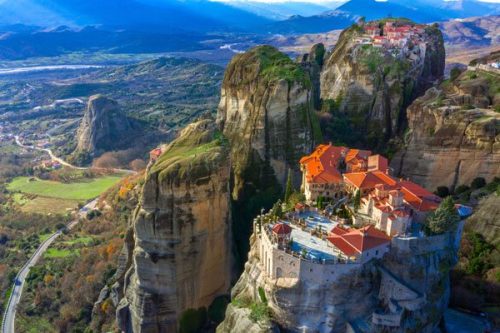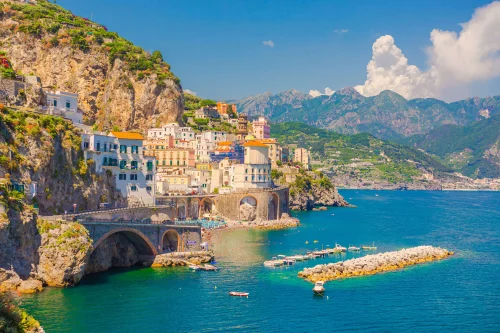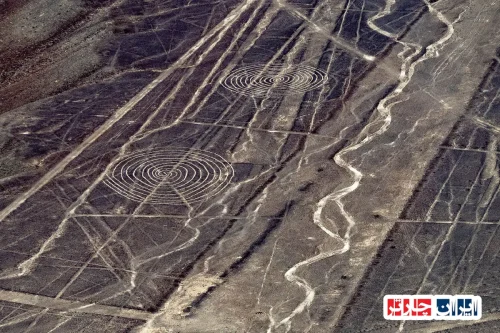Discover the Wonders of Tassili n’Ajjer National Park Djanet Algeria: A Unique Natural and Cultural Heritage
Exploring Tassili n’Ajjer National Park-Iran Charter offers a mesmerizing journey through one of the most remarkable landscapes and archaeological sites in the world. This vast protected area, located in the southeastern part of Algeria, is renowned for its breathtaking rock formations, ancient cave paintings, and diverse ecosystems. Visitors can marvel at the surreal “stone forests” formed by erosion over millions of years, creating a natural spectacle that resembles a dense forest of stone pillars and arches. The park’s unique geology and stunning scenery make it a must-visit destination for nature lovers and adventure seekers alike.
Furthermore, Tassili n’Ajjer is a treasure trove of prehistoric art, with thousands of rock engravings depicting early human life, hunting scenes, and spiritual rituals. These artworks, some dating back over 10,000 years, provide invaluable insights into the cultural evolution of ancient civilizations. The park’s rich biodiversity includes endemic species adapted to the harsh desert environment, making it an important site for ecological research and conservation efforts. Protecting this UNESCO World Heritage site is crucial for preserving its natural beauty and historical significance for future generations.

Discover the Rich History and Archaeological Discoveries of Tassili n’Ajjer National Park Djanet Algeria
Tassili n’Ajjer National Park Djanet Algeria is a UNESCO World Heritage site renowned for its extensive archaeological significance and ancient human settlements dating back over ten thousand years. Early excavations have uncovered numerous prehistoric cave paintings and carvings that depict early human life, hunting scenes, and spiritual rituals. These artifacts provide invaluable insights into the cultural evolution and environmental changes that have shaped the region over millennia. The park’s archaeological sites reveal a continuous human presence, illustrating how early communities adapted to the harsh desert environment while developing complex social and spiritual practices. Studying these discoveries helps us understand the migration patterns, climate shifts, and technological advancements of ancient civilizations in North Africa. Preservation of these archaeological treasures is crucial for future research and cultural heritage. The ongoing excavations continue to shed light on the rich tapestry of human history embedded within the rugged landscape of Tassili n’Ajjer Djanet Algeria. Protecting this heritage ensures that the story of human resilience and creativity remains accessible for generations to come. Recognizing the global importance of these findings, international efforts are dedicated to conserving the site against natural erosion and human threats, safeguarding its legacy as a window into our collective past.
Unveiling the Secrets of Cave Art and Prehistoric Paintings in Tassili n’Ajjer National Park Djanet Algeria
The cave paintings and rock art of Tassili n’Ajjer National Park Djanet Algeria are among the most remarkable and extensive prehistoric artworks in the world. These murals, dating from around 8000 to 3000 BCE, vividly depict scenes of hunting, dancing, and spiritual ceremonies, offering a glimpse into the lives and beliefs of early inhabitants. The artwork features detailed images of animals such as cattle, antelope, crocodiles, and wild cats, illustrating the biodiversity of the region during different climatic periods. The stylistic diversity and symbolic motifs suggest a sophisticated cultural expression and possibly ritualistic practices. Researchers believe that these paintings served multiple purposes, including recording important events, facilitating religious ceremonies, or teaching social values. The use of natural pigments and innovative techniques demonstrates the artistic ingenuity of prehistoric communities. These artworks also provide clues about environmental changes, as shifts in animal populations reflect climate fluctuations over thousands of years. Protecting and studying these cave paintings is vital for understanding early human cognition, spirituality, and societal development. Conservation efforts focus on preventing deterioration caused by weathering and human interference, ensuring that these invaluable cultural assets endure. The cave art of Tassili n’Ajjer remains a testament to human creativity and spiritual life in ancient North Africa.
Geological Marvels and the Unique Landscape of Tassili n’Ajjer Djanet Algeria
The geological formations of Tassili n’Ajjer Djanet Algeria are a striking display of natural artistry shaped over millions of years. Known as the “Stone Forest,” this region features towering sandstone pillars, deep canyons, and surreal rock formations that resemble a forest of stone. These structures are the result of extensive erosion, wind, and water activity that sculpted the landscape into extraordinary shapes. The vibrant hues of red, orange, and yellow in the rocks highlight the region’s rich mineral composition, creating a breathtaking visual spectacle. The formations serve as natural archives, revealing the geological history and climatic evolution of the Sahara Desert. The area’s unique topography supports diverse microhabitats, fostering rare plant and animal species adapted to extreme conditions. Researchers and geologists study these formations to understand the processes of desertification, erosion, and sedimentation. The landscape’s dramatic scenery attracts travelers, photographers, and scientists alike, offering unparalleled opportunities for exploration and discovery. Preserving these geological wonders is essential for ongoing scientific research and ecological balance. The surreal beauty of Tassili n’Ajjer’s rock formations makes it a natural masterpiece and a symbol of Earth’s dynamic geological processes.
Unique Biodiversity and Wildlife of Tassili n’Ajjer Djanet Algeria
Tassili n’Ajjer Djanet Algeria boasts a remarkable diversity of flora and fauna adapted to its arid environment. Despite the harsh desert conditions, the region provides vital habitats for numerous species, including endemic and endangered animals. The resilient wildlife includes mountain goats, desert foxes, and a variety of bird species such as eagles, vultures, and migratory birds that utilize the region’s cliffs and oases. The vegetation is sparse but specialized, with drought-resistant plants like acacias, succulents, and grasses that sustain herbivores and insects. These ecosystems demonstrate extraordinary biological adaptation and resilience, offering valuable insights into survival strategies in extreme environments. Conservation programs aim to protect these fragile habitats from overexploitation and climate change impacts. The region’s biodiversity plays a critical role in maintaining ecological balance and supporting scientific research on desert adaptation. Visitors and researchers are encouraged to observe sustainable practices to preserve this unique natural heritage. Protecting the diverse species of Tassili n’Ajjer Djanet Algeria ensures the continuity of its ecological legacy and contributes to global biodiversity conservation efforts.
Impact of Climate Change on the Formation and Preservation of Tassili n’Ajjer Djanet Algeria
Climate change has significantly influenced the landscape and ecological stability of Tassili n’Ajjer Djanet Algeria. Rising temperatures and decreasing rainfall accelerate erosion processes, leading to the gradual deterioration of rock formations and cave paintings. These environmental shifts threaten the preservation of archaeological sites and natural features that have existed for thousands of years. Changes in climate patterns also affect the region’s biodiversity, causing shifts in animal migration and plant growth cycles. Increased desertification and sandstorms pose additional risks to the fragile ecosystem and cultural heritage. Scientific studies emphasize the importance of implementing adaptive conservation strategies, such as controlling visitor access and monitoring environmental conditions. International cooperation and technological innovations, like remote sensing and climate modeling, are crucial for managing these impacts. Raising awareness about climate change effects helps mobilize resources for sustainable preservation efforts. Ensuring the resilience of Tassili n’Ajjer’s natural and cultural assets requires proactive measures to mitigate climate risks and protect this invaluable UNESCO site for future generations.
Conservation Efforts and the Role of UNESCO in Protecting Tassili n’Ajjer Djanet Algeria
Tassili n’Ajjer Djanet Algeria’s designation as a UNESCO World Heritage site underscores its global importance and the collective responsibility for its preservation. International organizations and local authorities collaborate to implement conservation programs that safeguard archaeological sites, geological formations, and biodiversity. These efforts include controlling illegal activities such as unregulated tourism, poaching, and vandalism, which threaten the integrity of the region. Advanced technologies like 3D mapping, environmental monitoring, and restoration techniques are employed to document and preserve the site’s features. Education campaigns aim to raise awareness among local communities and visitors about the significance of sustainable tourism and heritage protection. UNESCO’s support also facilitates research projects that deepen understanding of the region’s natural and cultural assets. Protecting Tassili n’Ajjer Djanet Algeria requires ongoing commitment, funding, and international cooperation to ensure that this unique landscape remains intact for future generations to study and enjoy. The preservation of this UNESCO site exemplifies a successful model of global heritage management and cultural diplomacy.
Travel Guide: Best Routes, Visiting Tips, and When to Explore Tassili n’Ajjer Djanet Algeria
Exploring Tassili n’Ajjer Djanet Algeria offers an unforgettable adventure through one of the world’s most extraordinary landscapes. The region features several accessible routes leading to key attractions such as ancient caves, rock formations, and scenic viewpoints. The optimal time to visit is during the cooler months from October to April, when weather conditions are more favorable for exploration. Travelers should prepare adequately with appropriate gear, including sturdy footwear, sun protection, and sufficient water supplies. Guided tours are highly recommended to navigate the rugged terrain safely and to gain in-depth knowledge about the archaeological and geological features. Respect for local customs and environmental guidelines is essential to preserve the site’s integrity. Permits are required for certain areas, so advance planning is advised. Engaging with local guides enriches the experience and supports community-based tourism. A well-planned visit ensures a safe, educational, and environmentally responsible journey through this natural and cultural wonderland.
How Cultural Heritage and Traditional Arts Shape the Identity of Tassili n’Ajjer Djanet Algeria
The cultural heritage and traditional arts of Tassili n’Ajjer Djanet Algeria are integral to understanding the region’s historical identity. Indigenous communities have preserved unique music, dance, crafts, and oral traditions passed down through generations. These cultural expressions reflect the spiritual beliefs, social structures, and daily life of local inhabitants. Rock art and cave paintings are not only archaeological treasures but also serve as cultural symbols representing ancestral beliefs and societal values. Traditional crafts, such as pottery, weaving, and jewelry-making, showcase local artisans’ skills and cultural narratives. Festivals and ceremonies often incorporate music and dance, reinforcing community bonds and cultural continuity. Protecting and promoting these intangible heritages is vital for maintaining the region’s authentic identity amidst modern influences. Initiatives that support local artisans and cultural preservation help sustain these traditions and foster cultural tourism. The enduring legacy of these arts enriches the visitor experience and ensures that the cultural fabric of Tassili n’Ajjer Djanet Algeria remains vibrant and resilient.
Frequently Asked Questions about Tassili n’Ajjer National Park Djanet Algeria
- What is the historical significance of Tassili n’Ajjer?
- Tassili n’Ajjer holds immense archaeological importance as it contains prehistoric cave paintings and carvings dating back over 10,000 years. These artifacts depict early human life, hunting scenes, and spiritual rituals, offering valuable insights into ancient civilizations and their adaptation to desert environments.
- What types of prehistoric art are found in Tassili n’Ajjer?
- The park features extensive rock art, including murals and carvings that illustrate hunting scenes, dancing, and spiritual ceremonies. These artworks, created between 8000 and 3000 BCE, depict animals like cattle, antelope, crocodiles, and wild cats, showcasing the region’s biodiversity during different climatic periods.
- How do geological formations in Tassili n’Ajjer develop?
- The landscape is shaped by millions of years of erosion, wind, and water activity, resulting in towering sandstone pillars, deep canyons, and surreal rock formations. These natural structures serve as geological archives, revealing the Earth’s history and climatic changes over time.
- What is unique about the biodiversity in Tassili n’Ajjer?
- Despite the arid environment, the region supports diverse flora and fauna, including mountain goats, desert foxes, eagles, vultures, and drought-resistant plants like acacias and succulents. This biodiversity demonstrates remarkable adaptation to extreme desert conditions.
- How has climate change affected Tassili n’Ajjer?
- Climate change has accelerated erosion, threatened cave paintings, and impacted local ecosystems. Rising temperatures and decreased rainfall contribute to desertification, making conservation efforts vital to preserve archaeological and natural features.
- What role does UNESCO play in protecting Tassili n’Ajjer?
- UNESCO designates the area as a World Heritage site, supporting international and local initiatives to conserve archaeological sites, geological formations, and biodiversity. Efforts include monitoring, restoration, and promoting sustainable tourism practices.
- When is the best time to visit Tassili n’Ajjer?
- The ideal period is from October to April when the weather is cooler. Travelers should prepare with appropriate gear, including sturdy footwear, sun protection, and sufficient water, and consider guided tours for safety and deeper understanding.
- Are there any cultural traditions associated with Tassili n’Ajjer?
- Yes, indigenous communities have preserved traditional music, dance, crafts, and oral stories that reflect their spiritual beliefs and social practices. These cultural expressions are integral to the region’s identity and are often showcased during festivals.
- What conservation challenges does Tassili n’Ajjer face?
- Challenges include illegal tourism, vandalism, poaching, and natural erosion. Climate change further threatens the preservation of cave paintings and geological features. Ongoing efforts focus on monitoring, education, and sustainable management.
- How can visitors help in preserving Tassili n’Ajjer?
- Visitors should follow local guidelines, avoid damaging artifacts, respect wildlife, and support eco-friendly tourism. Engaging with local guides and participating in conservation programs can also contribute to preservation efforts.
- What are the main attractions within Tassili n’Ajjer?
- Highlights include ancient cave paintings, surreal rock formations, deep canyons, and scenic viewpoints. Exploring these sites offers a glimpse into prehistoric life and the region’s geological marvels.
- Is it necessary to obtain permits to visit Tassili n’Ajjer?
- Yes, certain areas require permits for access. It is advisable to plan ahead, contact local authorities or tour operators, and ensure all necessary permissions are secured before visiting.
- How does Tassili n’Ajjer contribute to our understanding of early human civilization?
- The site provides invaluable evidence of early human artistic expression, spiritual practices, and adaptation strategies. Studying its artifacts helps us understand migration patterns, environmental changes, and cultural evolution in North Africa.
- What measures are in place to prevent deterioration of the cave paintings?
- Conservation strategies include controlling visitor access, monitoring environmental conditions, applying protective coatings, and raising awareness about preservation. International cooperation supports ongoing restoration projects.
- How does Tassili n’Ajjer inspire scientific research?
- The region’s geological formations, archaeological sites, and biodiversity serve as a natural laboratory for studying climate change, erosion processes, early human behavior, and desert ecology, attracting researchers worldwide.
























